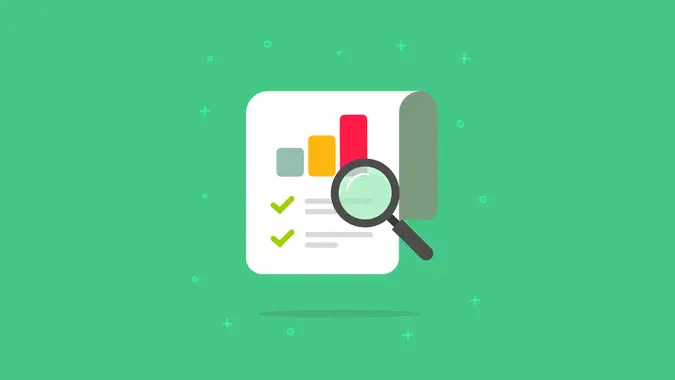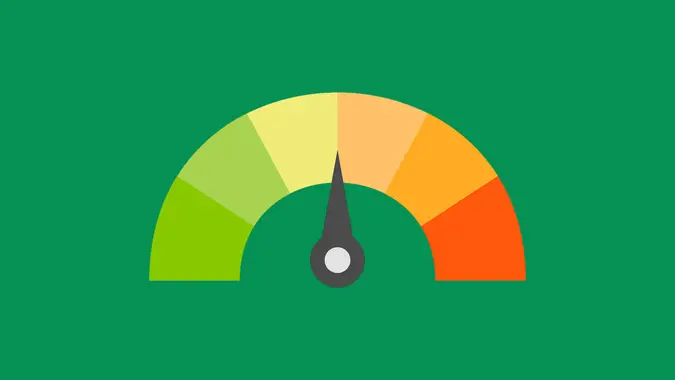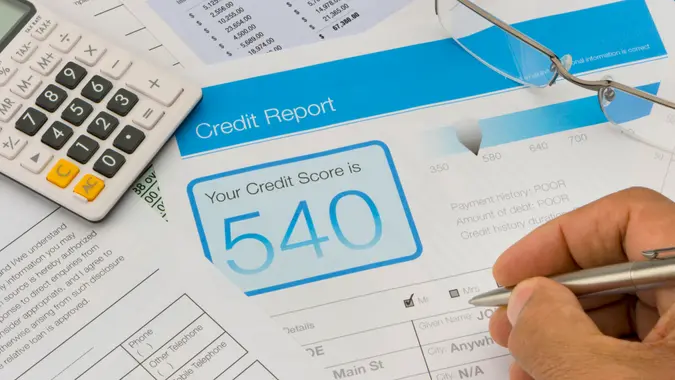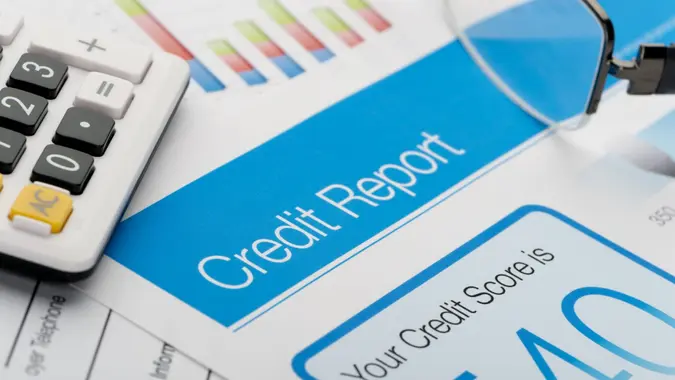What Are Tradelines? A Simple Guide to Credit Accounts

Commitment to Our Readers
GOBankingRates' editorial team is committed to bringing you unbiased reviews and information. We use data-driven methodologies to evaluate financial products and services - our reviews and ratings are not influenced by advertisers. You can read more about our editorial guidelines and our products and services review methodology.

20 Years
Helping You Live Richer

Reviewed
by Experts

Trusted by
Millions of Readers
Tradelines are credit accounts listed on your credit report. Each of your accounts is listed separately on your credit report, which provides information about the specific debts and creditors.
Knowing how to read tradelines can help you better understand your credit score, how to improve it and reveal what lenders see on your credit report.
What Information Can You Get From Tradelines?
Tradelines include key details, like:
- Your current balance
- Your payment history (whether you’ve paid on time or missed payments)
- The status of the account (open, closed or overdue)
There’s a tradeline for every credit account under your name. This may include revolving tradelines, which often involve debt associated with credit cards or lines of credit — as well as installment tradelines, which include loans with fixed payments.
How Do Creditors and Lenders Use Tradelines?
Tradelines largely do two things: give credit bureaus information to generate your credit score and show lenders how you’ve handled different types of credit in the past.
Your credit score tells lenders how trustworthy you are — which means it’s important to keep it as high as possible. Lenders will look up your credit score when you take out a loan, open a credit card or make a large purchase, like a car or a home. Having a low credit score can affect your eligibility for these loans and purchases, so your tradelines can either help or hurt your credit score.
How Tradelines Affect Your Credit Score
Tradelines dictate your entire credit score.
If you’re trying to raise your credit score, it may be worth adding more tradelines. You can do that by:
- Becoming an authorized user on a family member’s account
- Improving the five factors that make up your credit score
- Buying tradelines from a third party company
Buying tradelines can quickly increase your credit score just enough to gain approval for a specific loan or line of credit. But it can be costly.
The Five Factors That Affect Your Credit Score
If you want to to improve your credit score, it’s best to focus on the five factors that make it up:
Payment History — 35%
Your payment history is the biggest factor in your credit score. Miss a monthly payment on a tradeline, and your credit score will see a huge drop.
You only have to make the minimum payment to avoid a delinquent account. It’s possible to have a good credit score and a balance on your credit card as long as you make the minimum every month.
Credit Utilization — 30%
Credit utilization is the second most important component of your credit score. It’s the percentage of available revolving credit (such as your credit card limit) that you’re currently using. For example, if you’ve got a $10,000 credit line and you’ve got a $1,000 balance, your credit utilization is 10%.
Experts recommend that you keep your credit utilization below 30%. Anything higher can hurt your credit score.
Length of Credit History — 15%
The lengthier the average age of your tradelines, the better. Credit bureaus calculate the average length of your credit history by adding the age of all open accounts and dividing that total by the number of active accounts.
For this reason, you should avoid closing new tradelines if you can help it. Your length of credit history will be impacted. That said, you don’t want to keep tradelines that may be costing you money. For example, an annual fee-incurring credit card isn’t worth keeping if you can’t justify the membership cost. If you can’t downgrade the card to a no-annual-fee option, get rid of it.
Credit Mix — 10%
Your credit score likes when you’ve got more than one type of tradeline. A mix of different loans (credit cards, auto loans, mortgages, etc.) strengthens your credit.
New Credit and Hard Inquiries — 10%
Just as you shouldn’t close tradelines regularly, you also shouldn’t open one after another.
When you formally apply for a loan, the lender makes a “hard credit inquiry.” This gives the creditor the information of your other tradelines and helps them decide if you’re a good candidate for its product. Hard inquiries temporarily drop your credit score by a few points.
Also, when you open too many new accounts in a short period, it can become a red flag for future lenders. It may appear that you’re enduring hardship and scrambling for money.
How Long Do Tradelines Stay on Your Credit Report?
Knowing when tradelines are removed from your credit report can help you plan better financially:
- Positive Tradelines: Stay on your report for up to 10 years after you close an account, continuing to benefit your score.
- Negative Tradelines: Like late payments or collections, typically stick around for about seven years.
- Hard Inquiries: These appear when you apply for new credit and usually remain visible for about two years.
- Closed Accounts: Even accounts you close in good standing continue helping your score for years afterward.
Ready to keep improving your financial future? Consider checking out your credit report, exploring credit-building products from your bank or comparing financial tools designed to help manage your credit better. Your credit score — and future self — will thank you!
FAQ
Here are some common questions and concerns to take note of:- What are tradelines on a credit report?
- Tradelines are simply credit accounts (cards, personal loans, mortgages, etc.) on your credit report.
- How do tradelines impact my credit score?
- Tradelines dictate your credit score, as the credit bureaus score you based on how responsible you handle them. If you make on-time payments, if your credit utilization is low, etc., your credit score will be high.
- How long do tradelines stay on my credit report?
- Tradelines stay on your credit report for between seven and 10 years. The exception is authorized user tradelines, which can disappear months after you've been removed from the account.
- Can I remove a negative tradeline from my credit report?
- You can't remove a negative tradeline unless it's fraudulent -- in which case you can contact the credit bureau for assistance. Negative tradelines organically disappear after seven years.
- Is buying tradelines a good way to improve my credit?
- Buying tradelines can improve your credit for a while, but it's not a good way to fortify your credit long-term. Plus, it costs money.
Editorial Note: This content is not provided by any entity covered in this article. Any opinions, analyses, reviews, ratings or recommendations expressed in this article are those of the author alone and have not been reviewed, approved or otherwise endorsed by any entity named in this article.
Our in-house research team and on-site financial experts work together to create content that’s accurate, impartial, and up to date. We fact-check every single statistic, quote and fact using trusted primary resources to make sure the information we provide is correct. You can learn more about GOBankingRates’ processes and standards in our editorial policy.
 Written by
Written by  Edited by
Edited by 






















